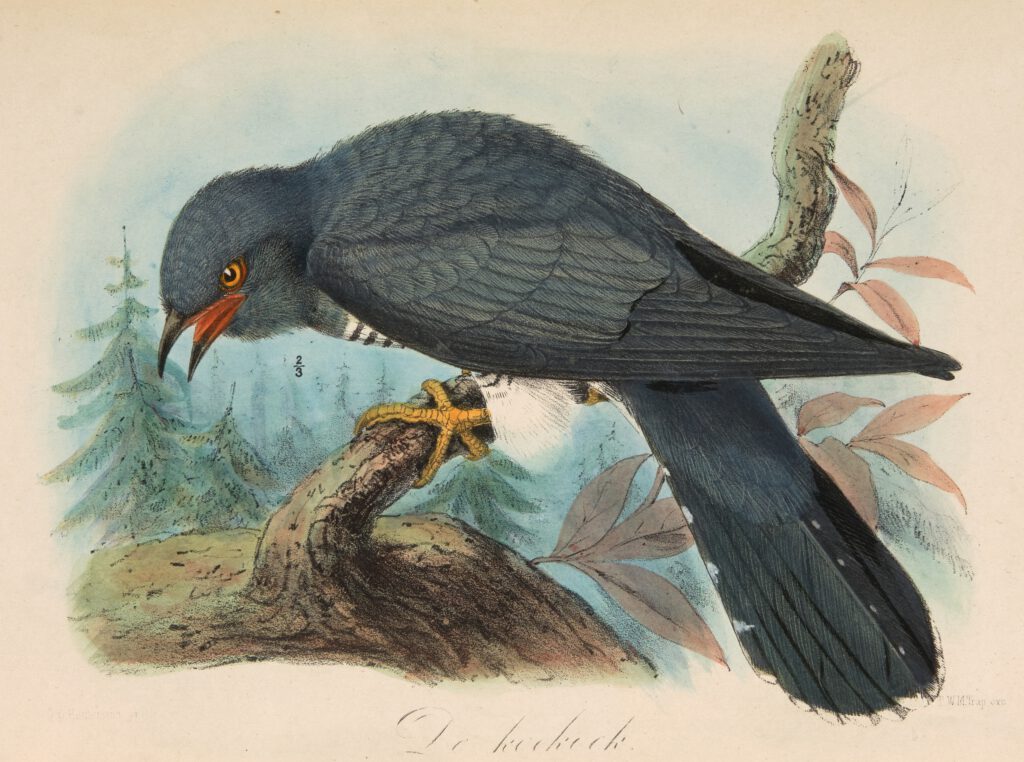The cuckoo

The cuckoo, in the second volume of Onze vogels in huis en tuin / Johannes Gerardus Keulemans. Leiden: P.W.M. Trap, 1869-1876. See the digital version at Biodiversity Heritage Library.
In addition to native bird species, the three-volume work Onze vogels in huis en tuin (‘Our birds of the home and garden’), written and illustrated by J.G. Keulemans, describes a large number of aviary birds and fancy pigeons and poultry. Keulemans’ descriptions, like those in Sep and Nozeman’s Nederlandsche Vogelen, are very people-oriented. For example, many of the descriptions describe how to catch a particular bird species and how best to care for them in captivity. Nevertheless, this book also contains important information about the natural history of birds, such as the ranges of various species. Keulemans was a true nature expert and also took to the field to observe birds himself. His field observations of the cuckoo, for example, which amount to no less than thirteen pages, provide an excellent insight into the habitat and occurrence of this species in the Netherlands in the first half of the nineteenth century.
The following quote from the description reveals that it was not always only a matter of observing (and is entirely in the spirit of the times):
“Many people do not believe that the female cuckoo lays her egg on the ground and then takes it in her mouth to bring it to some previously found nest. And yet this has often been observed, and I myself have shot a cuckoo female, who had a broken egg in her mouth (in any case it was broken when I came upon the dead bird; apparently broken when the bird was killed, or by the shot itself).”